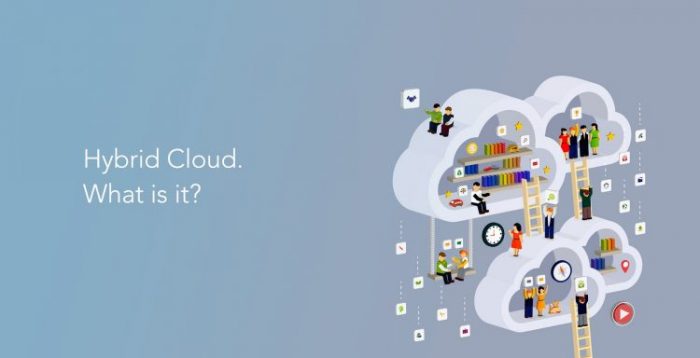In the tech industry, there are many new terms coming into the public eye every day. One of the newer terms you may have heard is the term “hybrid cloud.” Many people have heard about the hybrid cloud, but not a lot of people understand how it can benefit their organization. Here’s what you need to know about hybrid cloud architecture.
What Is the Hybrid Cloud?
In simplest terms, a hybrid cloud setup is when your company uses both on-premises and off-premises IT resources. For example, if you save some of your documents to an on-site private cloud, then save some of your less-used documents to an off-site public cloud, you’re already engaging with a hybrid cloud process for your company. Hybrid cloud technology is something that many companies actually already use.
What Are the Benefits of the Hybrid Cloud?
There are a variety of benefits that the hybrid cloud can provide to an organization, especially an organization that’s currently using exclusively on-premises data storage. The two main benefits of the hybrid cloud are general flexibility and cost savings over storing all data on premises.
-
Flexibility
The flexibility of the hybrid cloud is a main benefit. In-house IT infrastructure is incredibly difficult to manage; if you’re planning to upgrade, you need to make sure that you’ve planned it significantly in advance. However, if you have much of your information uploaded to the public cloud, you can maximize your cloud services and often expand services with just the click of a button. Plus, having some of your services on-site means that you can access a variety of your IT information more quickly than you might be able to with a public cloud, and if you’re accessing plenty of documents every day, those extra seconds may add up dramatically.
-
Cost Savings
Having an on-premises cloud can be helpful in some ways, but it’s very expensive. A public cloud can be as low as a quarter of the price of a private cloud, and that means if you’re able to move a lot of your storage off premises, you’ll be very likely to save a lot of money in comparison to an entirely on-premises cloud. One of the best options may be to have some of your storage, sometimes as low as about 20%, on-premises, with the rest of your storage off-premises. This can allow you to quickly access the files you regularly use, while keeping less-used files off-premises.
Conclusion
As you can see, a hybrid cloud approach can be a great option for most businesses. Not only is it a great way to save money on your IT needs, but it can also help you access the most important information for your business very easily. Although hybrid cloud architecture isn’t the perfect option for everyone, it can be a great way to divide your storage options to make sure you’re getting the best experience at the best price. Look into hybrid cloud options if you’re trying to maximize your company’s storage options.
